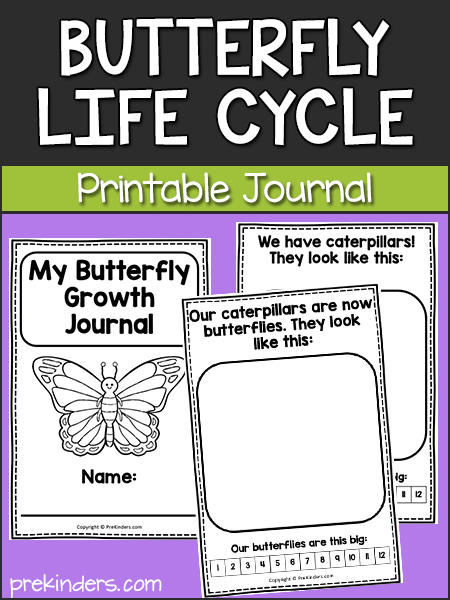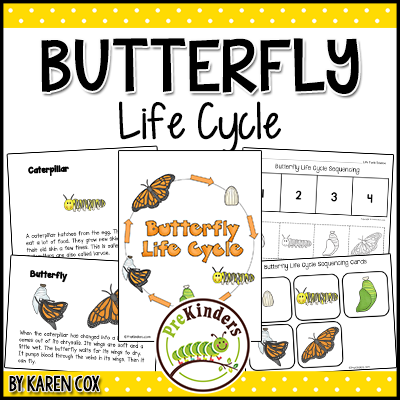Here are some printable resources to use in your classroom while children are observing the butterfly life cycle.
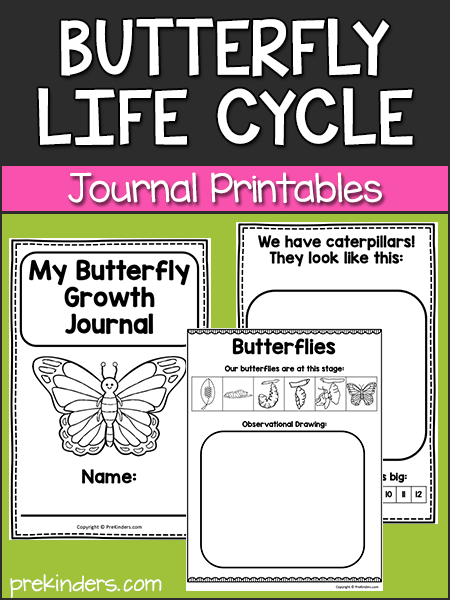
How to Grow Caterpillars in the Classroom
Caterpillars can be purchased from insect companies, which are then sent through the mail to your school. Caterpillars typically arrive very tiny and in a cup with their food.
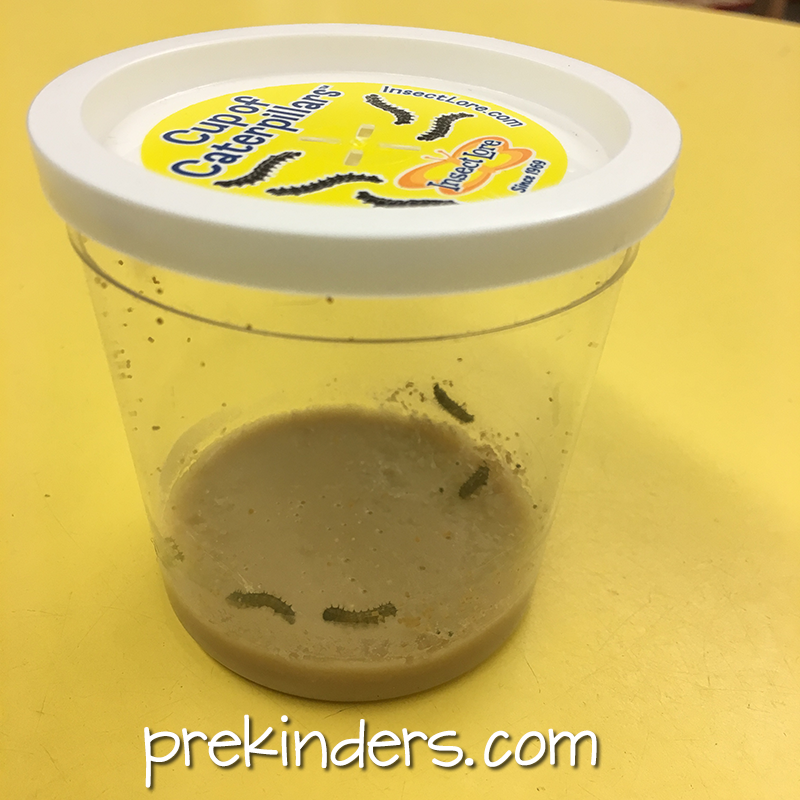
Wait a few days, and the caterpillars will continue to eat and grow. Once all caterpillars attached themselves to the lid of the cup and formed a “J”, wait three days and then the caterpillars can be moved to a butterfly net cage until they hatch out as butterflies.
Be sure to keep them away from air conditioner vents. Once the caterpillars have hatched from their chrysalis, provide them with orange slices to eat. One fresh orange slice per day works well.
Be sure to explain to children that the “red stuff” they see that comes out of the chrysalis is not blood. It’s called meconium and it’s completely normal.
Give your students plenty of opportunity to observe the butterflies! Don’t be too quick to release them because the point of having butterflies is to give children time to observe. Butterflies should be released within a week after they hatch. In the past, I’ve had butterflies hatch near the end of the week, such as Thursday or Friday, and they were fine at school over the weekend. I just made sure to give them two fresh orange slices on Friday afternoon just before I left to go home.
During the time that children are observing butterflies, find a spot to keep the butterflies out of children’s reach during center time or any time you are not able to supervise. Sometimes children will try to poke them with their fingers, so be sure to be with the children if the butterflies are within reach.
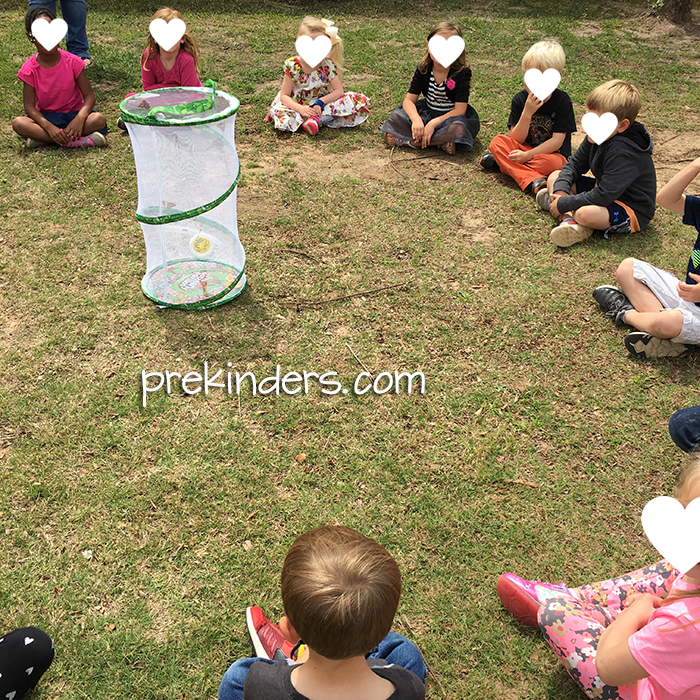
When it’s time to release the butterflies, have your students sit in a large circle on the ground. Discuss rules, ensure all children know they are expected to stay seated. Butterflies will often land on the ground near the group, and you don’t want any to get crushed. Many times, I’ve been able to get one of the butterflies to sit on my finger and I can then transfer the butterfly to a child’s finger. Some years the butterflies have been too afraid of humans for this, but many times, it has worked out great.
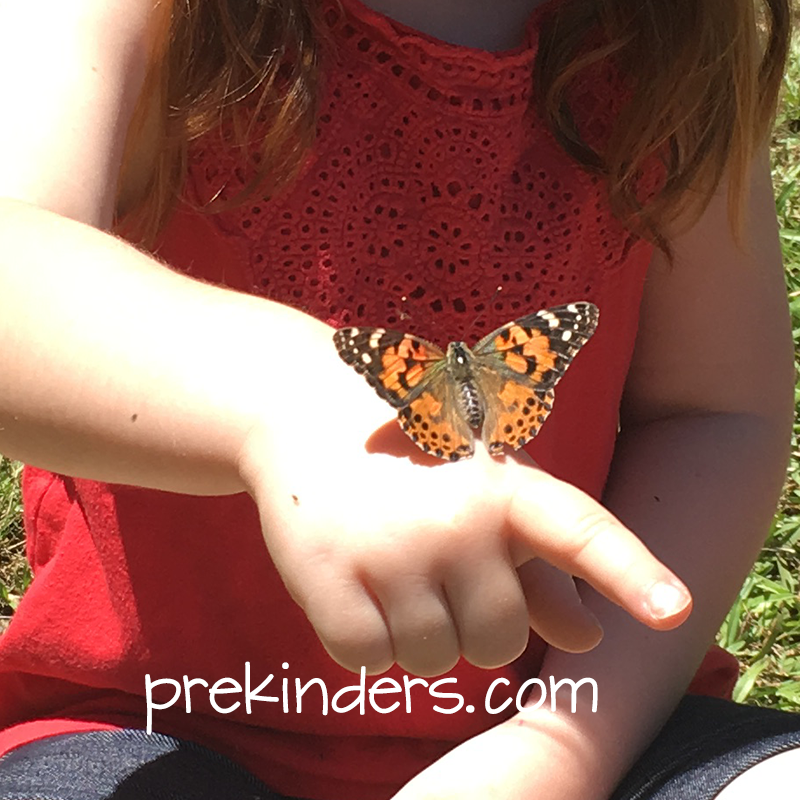
Never release butterflies onto a school playground unless you’re certain the playground will not be occupied again that day. They will often stay in the area close to where they have been released and may stay close to the ground for a while.
Most butterfly nets can be washed in water. If necessary, use a little soap, then rinse.
Be sure to follow all instructions provided by the insect company.
Find more Bug Activities here!
Butterfly Class Journal Chart
This printable is a large journal that can be used as a class journal. Put it together like a book, or post it on a bulletin board or dry erase board to document your butterflies’ life cycle process.
You could have a different helper or leader each day to draw the life cycle on the chart. You could also take photos each day and attach to the chart pages.
Download the Butterfly Class Journal Chart
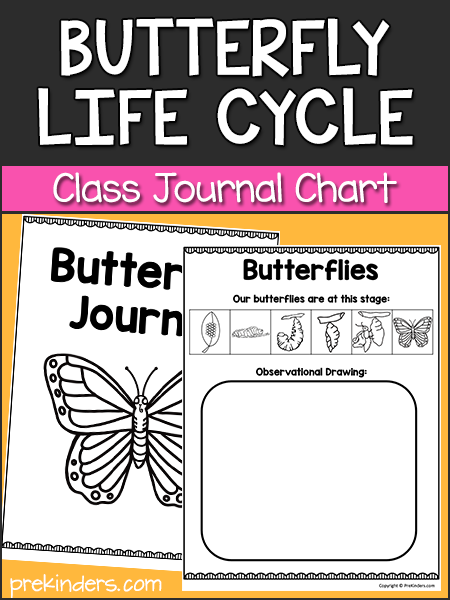
Butterfly Growth Journal
Print and make a copy for each student in your class to make their own butterfly life cycle journal. Have children draw the caterpillars and butterflies at each stage in the book. Measure it’s size with Unifix cubes or something similar and mark in the journal how many cubes long.
Download the Butterfly Growth Journal
